Related Research Articles

William Erwin Eisner was an American cartoonist, writer, and entrepreneur. He was one of the earliest cartoonists to work in the American comic book industry, and his series The Spirit (1940–1952) was noted for its experiments in content and form. In 1978, he popularized the term "graphic novel" with the publication of his book A Contract with God. He was an early contributor to formal comics studies with his book Comics and Sequential Art (1985). The Eisner Award was named in his honor and is given to recognize achievements each year in the comics medium; he was one of the three inaugural inductees to the Will Eisner Comic Book Hall of Fame.

Robert Kane was an American comic book writer, animator and artist who co-created Batman and most early related characters for DC Comics. He was inducted into the comic book industry's Jack Kirby Hall of Fame in 1993 and into the Will Eisner Comic Book Hall of Fame in 1996.
Morton Meskin was an American comic book artist best known for his work in the 1940s Golden Age of Comic Books, well into the late-1950s and 1960s Silver Age.
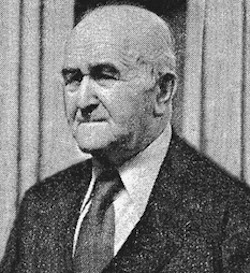
Harry Chesler, often credited as Harry "A" Chesler, with the "A" an affectation rather than a true initial, was the entrepreneur behind the first comic book packager of the late-1930s to 1940s Golden Age of comic books, supplying comics features and complete comic books to publishers testing the waters of the emerging medium.
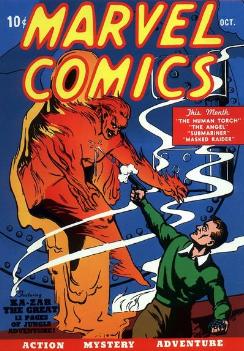
Funnies, Inc. was an American comic book packager of the late 1930s to 1940s period collectors and historians call the Golden Age of Comic Books. Founded by Lloyd Jacquet, it supplied the contents of early comics, including that of Marvel Comics #1, the first publication of what would become the multimedia corporation Marvel Comics.
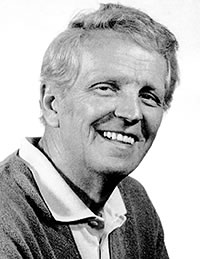
George Tuska, who early in his career used a variety of pen names including Carl Larson, was an American comic book and newspaper comic strip artist best known for his 1940s work on various Captain Marvel titles and the crime fiction series Crime Does Not Pay and for his 1960s work illustrating Iron Man and other Marvel Comics characters. He also drew the DC Comics newspaper comic strip The World's Greatest Superheroes from 1978–1982.
Fox Feature Syndicate was a comic book publisher from early in the period known to fans and historians as the Golden Age of Comic Books. Founded by entrepreneur Victor S. Fox, it produced such titles as Blue Beetle, Fantastic Comics and Mystery Men Comics.
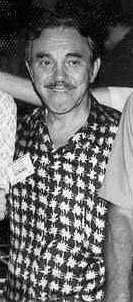
Samuel Maxwell "Jerry" Iger was an American cartoonist and art-studio entrepreneur. With business partner Will Eisner, he co-founded Eisner & Iger, a comic book packager that produced comics on demand for new publishers during the late-1930s and 1940s period known to fans and historians as the Golden Age of Comic Books.
"Charles Nicholas" is the pseudonymous house name of three early creators of American comic books for the Fox Feature Syndicate and Fox Comics: Chuck Cuidera (1915–2001), Jack Kirby (1917–1994), and Charles Wojtkoski (1921–1985). The name originated at Eisner & Iger, one of the first comic book packagers that created comics on demand for publishers entering the new medium during the 1930s–1940s Golden Age of comic books. The three creators are listed in order of birth year, below.
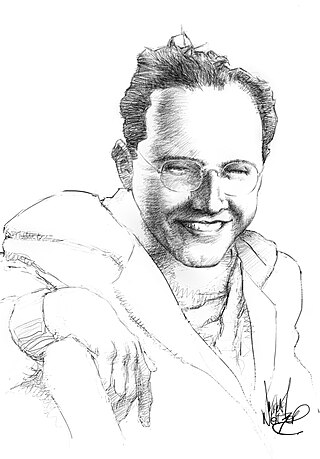
Louis Kenneth Fine was an American comic book artist known for his work during the 1940s Golden Age of comic books, where his draftsmanship became an influential model to a generation of fellow comics artists.

Everett M. Arnold, also known as Busy Arnold, was an American publisher and an early comic-book entrepreneur whose company Quality Comics published during the 1930s and 1940s period fans and historians call the Golden Age of Comic Books. He was also instrumental in the publishing arrangement that led to Will Eisner's newspaper Sunday-supplement comics series The Spirit.
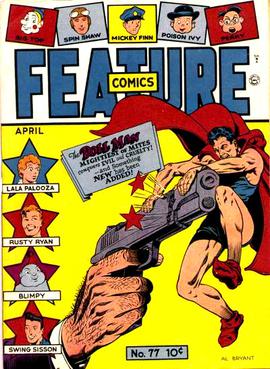
Feature Comics, originally Feature Funnies, was an American comic book anthology series published by Quality Comics from 1939 until 1950, that featured short stories in the humor genre and later the superhero genre.
Luis "Louis" Cazeneuve was an Argentine-born American comic-book artist. He is best known for co-creating the Marvel Comics character Red Raven, and for his prolific work on the DC Comics characters Aquaman, Shining Knight, the Boy Commandos and others during the 1940s period fans and historians call the Golden Age of Comic Books.
Klaus Nordling was an American writer-artist for American comic books. He is best known for his work on the 1940s masked-crimefighter feature "Lady Luck", and as co-creator of the Marvel Comics superhero the Thin Man. Some of the early Nordling's pen names are Fred Nordley, F. Klaus, Ed Norris, and Clyde North.
Bernard Baily was an American comic book artist best known as co-creator of the DC Comics characters the Spectre and Hourman, and a comics publisher, writer, and editor.

Alexander Anthony Blum was a Hungarian-American comic book artist best remembered for his contributions in the 1940s and 1950s to the long-running comic book series Classics Illustrated.
Audrey Anthony Blum was an American comic book writer active during the 1930s and 1940s "Golden Age of Comic Books", known for her work with Quality Comics and other publishers and as one of the first female comics professionals in what was then an almost entirely male industry.

Jumbo Comics was an adventure anthology comic book published by Fiction House from 1938 to 1953. Jumbo Comics was Fiction House's first comics title; the publisher had previously specialized in pulp magazines. The lead feature for Jumbo Comics' entire run was Sheena, Queen of the Jungle.
Comics packaging is a publishing activity in which a publishing company outsources the myriad tasks involved in putting together a comic book — writing, illustrating, editing, and even printing — to an outside service called a packager. Once the comics packager has produced the comic, they then sell it to the final publishing company.
References
- 1 2 Bails, Jerry; Ware, Hames (eds.). "Eisner and Iger Studio". Who's Who of American Comic Books, 1928–1999.
- 1 2 "Eisner interview". Jack Kirby Collector . No. 16. June 1997.
- 1 2 Wow, What a Magazine! at the Grand Comics Database.
- ↑ Jones, Gerard (2004). Men of Tomorrow: Geeks, Gangsters and the Birth of the Comic Book. Basic Books.; hardcover ISBN 0-465-03656-2; 2005 trade paperback ISBN 0-465-03657-0
- ↑ Steranko, Jim (1972). The Steranko History of Comics 2. Supergraphics. p. 112.
When Wow folded in 1937, Eisner put up his talent and $35 to form a partnership with Jerry Iger. They opened an office on Madison Avenue and 53rd Street....
- ↑ Amash, Jim (May 2005). "I Always Felt Storytelling was as Important as the Artwork: Will Eisner Talks About Quality Comics, Eisner & Iger, The Spirit—and Other Stuff". Alter Ego . No. 48. p. 7.
- ↑ Kitchen, Denis. "Annotations to The Dreamer," in Eisner, Will, The Dreamer (W.W. Norton & Company, New York, 2008), p. 49. ISBN 978-0-393-32808-0
- ↑ Eisner, Will (2008). The Dreamer. New York: W.W. Norton & Company. ISBN 978-0-393-32808-0.
- ↑ "The Shop System I: Will Eisner". The Comics Journal . No. 249. December 2002. Archived from the original on May 11, 2008. Retrieved October 26, 2005.
- ↑ "Interview with Jerry Iger" Archived October 1, 2012, at the Wayback Machine , Cubic Zirconia Reader, 1985. WebCitation archive.
- ↑ Alter Ego, p. 9
- ↑ Mercer, Marilyn. "The Only Real Middle-Class Crimefighter." New York (Sunday supplement, New York Herald Tribune ), January 9, 1966; reprinted in Alter Ego No. 48 (May 2005), pp. 4–6
- ↑ Heintjes, Tom, The Spirit: The Origin Years #3 (Kitchen Sink Press, Sept. 1992)
- 1 2 3 4 "Iger Studio". Who's Who of American Comic Books, 1928–1999. Retrieved March 23, 2023.
- ↑ MacDonald, Heidi (September 19, 2014). "Must Read: Women Who Conquered the Comics World". The Beat.
- ↑ "Superior: 1945 - 1956". Grand Comics Database . Retrieved March 26, 2023.
- ↑ "S. M. Iger". Who's Who of American Comics Books, 1928–1999. Retrieved March 26, 2023.
- ↑ "Eisner and Iger Studio". Who's Who of American Comic Books, 1928–1999. Retrieved March 25, 2023.
- 1 2 Hajdu, David. The Ten-Cent Plague: The Great Comic-Book Scare and How It Changed America (Farrar, Straus and Giroux, 2008), ISBN 978-0-374-18767-5, p. 26.
- ↑ "Reed Crandall". Lambiek Comiclopedia . Retrieved March 17, 2023.
- 1 2 Tuska, George (July 2001). "I Didn't Stay In One Place!". Alter Ego . Vol. 3, no. 9. Raleigh, North Carolina: TwoMorrows Publishing. Archived from the original on November 29, 2010. Retrieved January 5, 2011.
- ↑ Stone in Cassar, James (February 1997). "Excerpts from Chic Stone interview". Jack Kirby Collector. No. 14. Archived from the original on December 23, 2010.
- ↑ "Frank Giacoia". Lambiek Comiclopedia. December 14, 2007. Archived from the original on March 8, 2016.